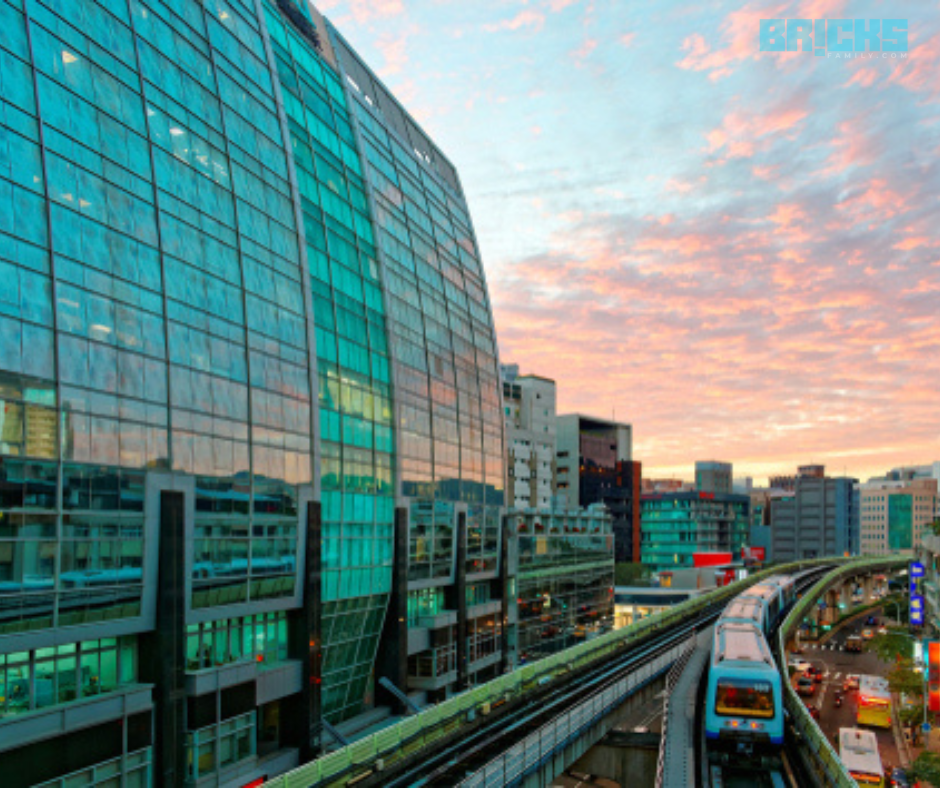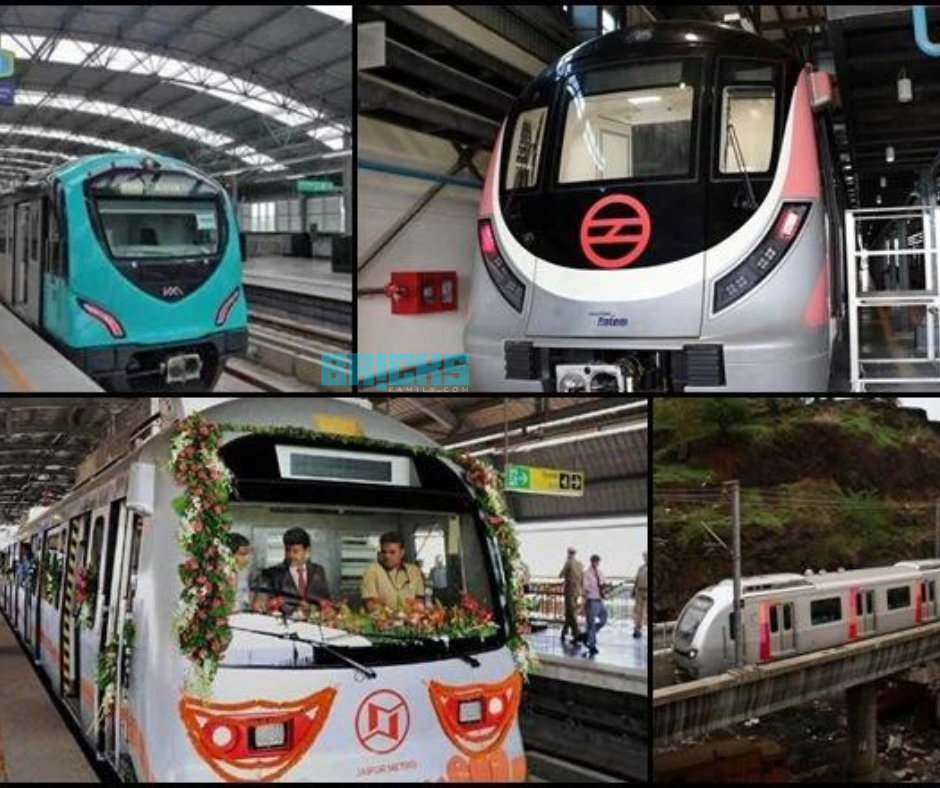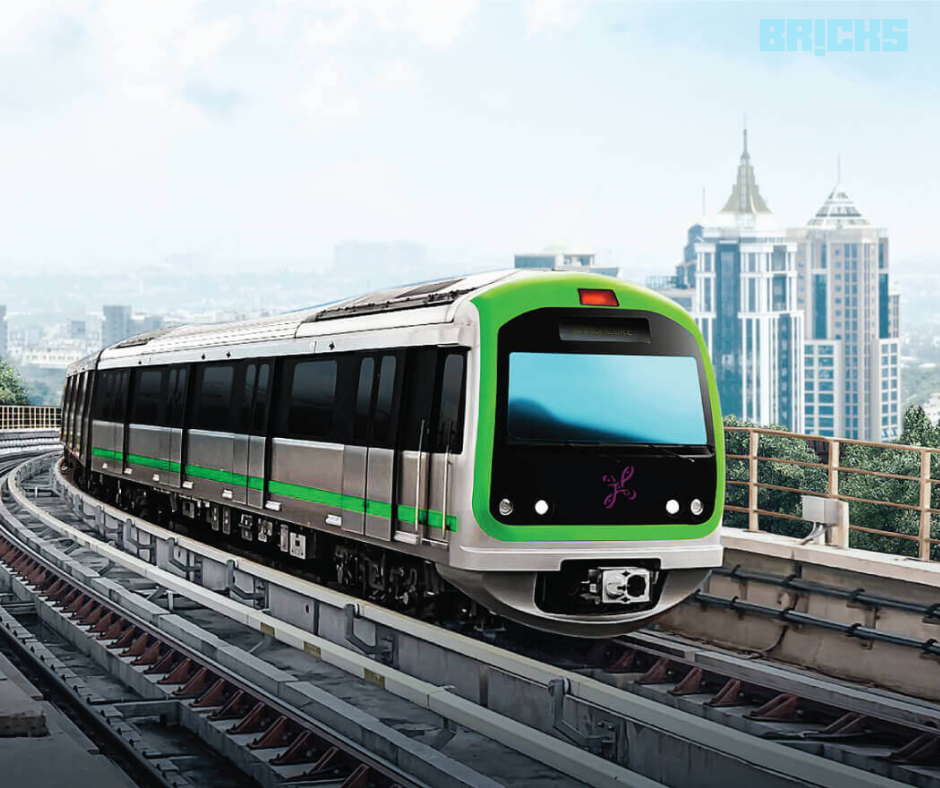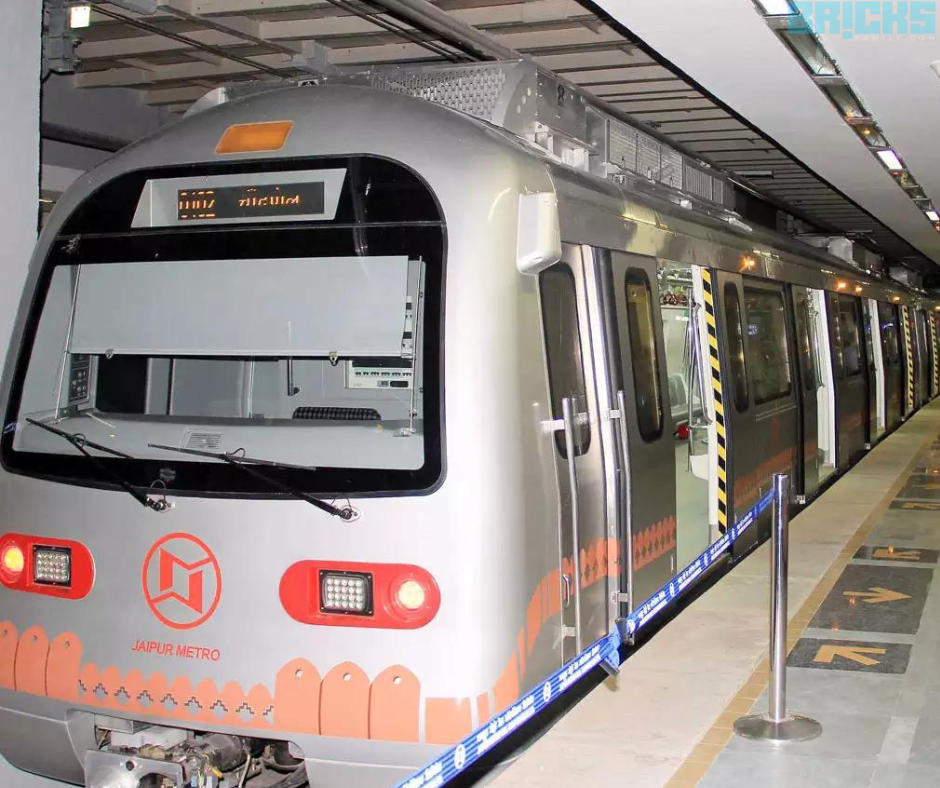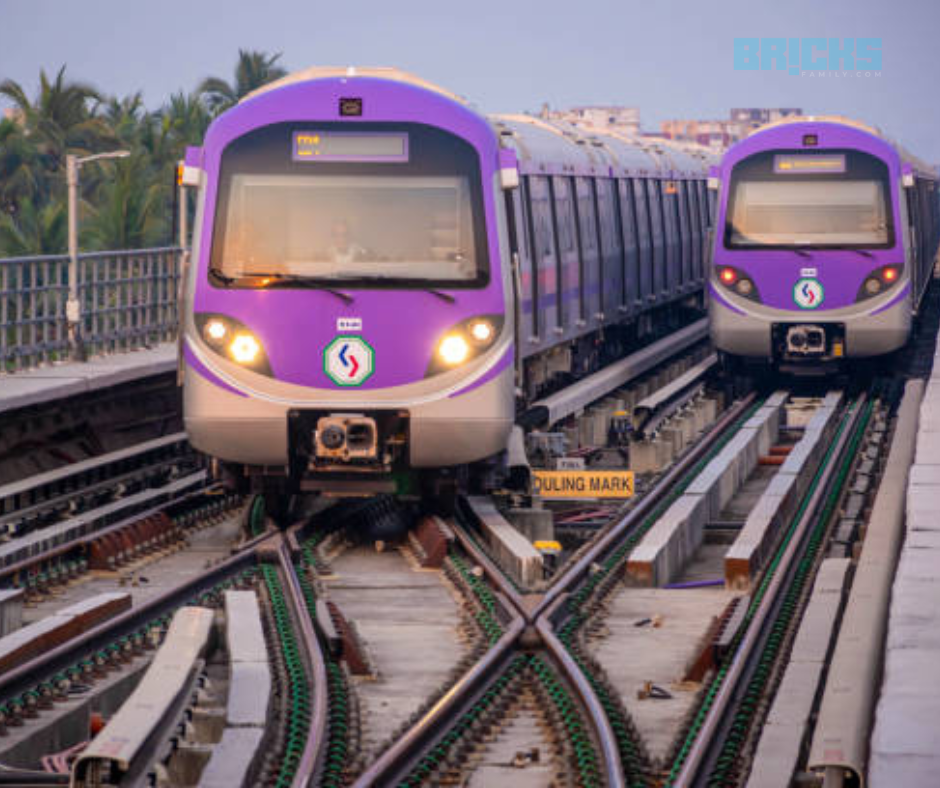
It is the Rapid Metro network is a light metro network that is located in Gurgaon. This Rapid metro route serves Gurgaon city and serves as a feeder to the central system of Delhi Metro. Incredibly, the metro route rapidly was the first privately-funded metro system around the globe. It connects the major commercial centers of Gurgaon, including Cyber City, Belvedere Towers, and DLF Phase 3, among other things. So here is Rapid Metro Gurgaon: Route, Stations, Map, Timings, and Fare.
Rapid Metro Gurgaon Limited developed the Rapid Metro Gurgaon. It was privately funded. The rapid metro line didn’t receive financial assistance from the government, the Union Government, Haryana Government, or any local authority. In the event of the bankruptcy of IL&FS, the operations in Rapid Metro Gurgaon were taken through Delhi Metro Rail Corporation (DMRC). Delhi Metro rail Corporation (DMRC).
Rapid Metro Route: Stations
The rapid metro route is located in Gurgaon city and spans a total length of 11.7 Km. The rapid Metro route is comprised of eleven metro stations. The Metro station system is entirely elevated by using standard gauge tracks. The metro’s rapid metro route consists of these metro stations:
| Sr No | Station Name | Date of commissioning | Interchange Station | Metro Station Layout | Metro Depot Connection | Depot Elevation |
| 1 | Sector 55–56 Metro Station | 31st March 2017 | None | Elevated | Rapid Metro Rail Depot | Elevated |
| 2 | Sector 54 Chowk Metro Station | 31st March 2017 | None | Elevated | None | None |
| 3 | Sector 53-54 Metro Station | 25th April 2017 | None | Elevated | None | None |
| 4 | Sector 42-43 Metro Station | 25th April 2017 | None | Elevated | None | None |
| 5 | Phase 1 Metro Station | 31st March 2017 | None | Elevated | None | None |
| 6 | Sikanderpur Metro Station | 14th November 2013 | Yellow Line Metro Station | Elevated | None | None |
| 7 | Phase 2 Metro Station | 14th November 2013 | None | Elevated | None | None |
| 8 | Belvedere Towers Metro Station | 14th November 2013 | None | Elevated | None | None |
| 9 | Cyber City Metro Station | 7th May 2014 | None | Elevated | None | None |
| 10 | Moulsari Avenue Metro Station | 14th November 2013 | None | Elevated | None | None |
| 11 | Phase 3 Metro Station | 14th November 2013 | None | Elevated | Rapid Metro Rail Depot | Elevated |
The Rapid Metro route provides a smooth interconnection with the Delhi Metro network at the Sikandarpur metro station of the Yellow line metro.
Rapid Metro Route Map
Rapid Metro Map illustrates an aerial perspective of the Rapid metro line in Gurgaon. It serves as an interconnection to that of the Delhi Metro Yellow Line, which is a route that runs between Samaypur Badli to Huda City Centre in Gurgaon. This Yellow Line metro can be boarded at Sikandarpur Metro station (Common to the Yellow Line and Rapid Metro). The Sikandarpur metro station connects to the Yellow line by a 90-meter pedestrian walkway.
The Rapid Metro map is as below-
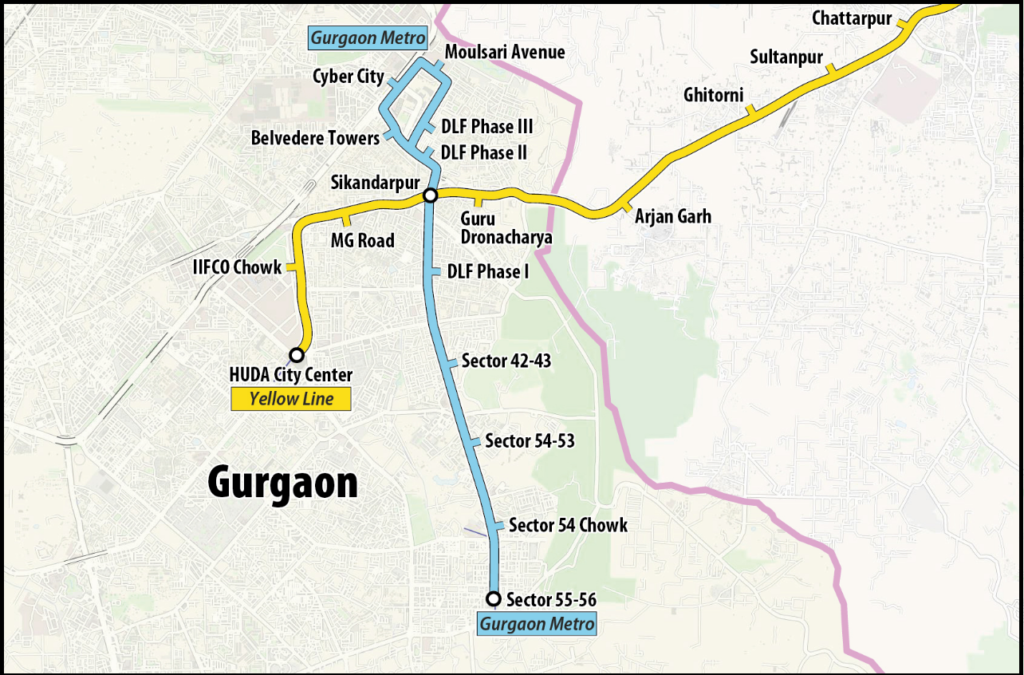
The rapid metro map can be seen on the Google map application as follows-

Rapid Metro Route: Technical Details
The Rapid Metro system is a unique and lightweight metro network and provides interconnectivity between Delhi and Gurgaon. Some of the key details of the Rapid Metro Route.
- The rapid metro project was initially funded by the DLF, Enso Group, and Infrastructure Leasings and Financial Services (IL&FS)
- The Rapid Metro route was built and operated by the Rapid Metro Gurgaon Limited (No operated by DMRC)
- The Rapid Metro was built in two phases. While phase 1 was opened to the general public in November 2013, the second phase became operational in March 2017.
- The rapid metro route is fully elevated and automated.
- A total of 12 trains are there in the Rapid Metro system.
- Each rapid metro train is designed to carry a load of 800 passengers.
- Each station of the rapid metro route is equipped with Emergency Stop Plungers for passenger safety.
- The DMRC took over control of the Rapid Metro in September 2019.
- The Rapid Metro system was the first metro system in India to auction the naming rights for its stations.
- A press-to-talk button enables the commuters to talk to the driver of the train directly.
- The Rapid Metro Rail has two depots- One at the Sector 55-56 station and the other one at the Phase 3 metro station.
- In contrast to the Delhi Metro network, where the security is handled by the Central Industrial Security Force (CISF), the security in the Rapid Metro route is handled by private security agencies.
- A dedicated metro police station is present at the Sikandarpur metro station.
Rapid Metro Timings
Its Rapid Metro network has proven to be a beneficial mode of transportation for commuters who travel to Delhi. Its operation on the metro begins at 06:05 in the morning and is in the process until 10:00 p.m.
The Three train rails of the metro run at intervals between 4 and 5 minutes. The operating speed of this metro is km/hr.
Rapid Metro Fares
The rapid metro network charges an all-inclusive rate of Rs 20, traveling independently in phases 1 and 2. If you want to move from the phase 1 lines into phase 2 lines, or in reverse, the costs are Rs 35.
The high fares cost is also mentioned as the reason for the low popularity and lack of ridership for Rapid Metro. Rapid Metro. Following the acquisition by the DMRC, the Delhi metro tokens and smart cards are now accepted in the rapid metro system. The metro rapid Gurgaon features advanced technology for automated fare collections.
Rapid Metro: Latest News
The Rapid Metro Gurgaon is one of the metro lines with the least distance and is primarily interline to the Delhi Metro network. There are plans to expand the network. In a recent conversation, the authorities announced plans for they are planning to extend the Rapid Metro Gurgaon would be developed another 17 kilometers. The new route will link with the Cyber City area to Gurgaon Railway station through the Gurgaon bus station and Sadar Bazar, located in Old Gurgaon.
The authorities believe this extension could be a significant relief for residents who live in Old Gurgaon. The route may connect central nodes, such as Old Delhi Road, Hero Honda Chowk, Sector 10, and much more shortly.
The most recent revelation revealed that the daily traffic in the Rapid Metro is less than 10% of what is projected in Detailed Project Reports (DPRs). A lack of ridership is believed to be the cause of the growing loss of Rapid Metro Gurgaon. The Covid-19 crisis has added to the pain, and the losses have increased during this time.
Summing up Rapid Metro Route Gurgaon
In conclusion, the Rapid Metro Gurgaon has provided an effective connectivity solution for residents of Gurgaon. It is primarily an intermediary service for Gurgaon’s Yellow Line metro. The Rapid Metro route has proven to be beneficial for commuters as well as the working population.
Also Read: Metro Network in India – Across All Cities
Similar Topics: Kanpur Metro Rail: Route, Timings, Fare, and Latest News









